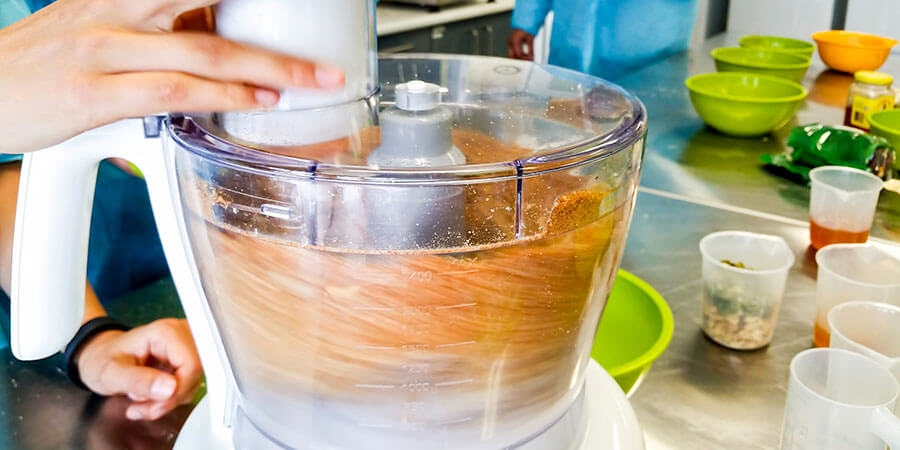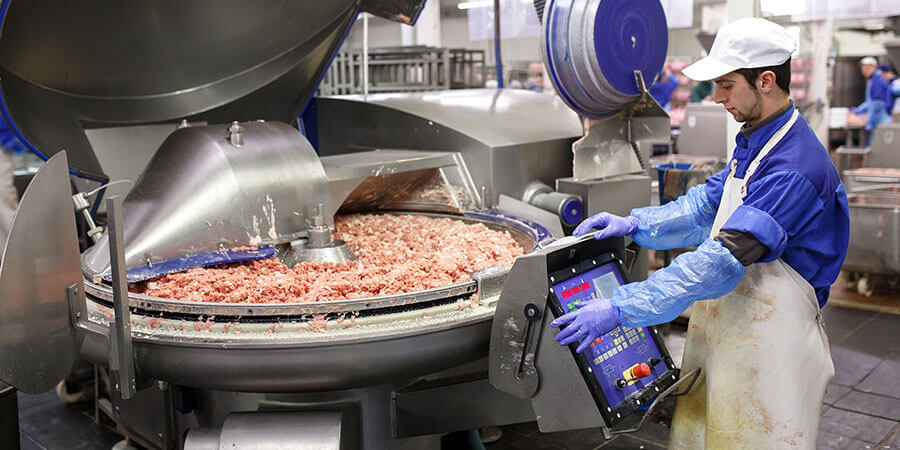How Do You Clean a Food Mill?

Food mills and grinders save time and effort and promote efficiency when used to mash, grind, or puree large amounts of food in commercial kitchens – especially if they’re electric-powered. But when it comes to cleaning your personal food grinder or your restaurant food mill, what do you do? GoFoodservice has the details!
How to Clean a Manual Food Mill at Home
Manual dried food grinders and mills as well as general purpose food mills are generally made up of a “bucket” or “bowl”, a handle, a crank attached to a sharp blade, and a grinding disc, sometimes also called a milling disc or screen. In order to properly and thoroughly clean a manual food mill at home you’ll need to first understand this. Then, once you’ve got the anatomy of your food mill down, you should:
- Remove the disc or screen.
- Clean the disc off thoroughly with a cleaning brush, soap, and water, taking care not to grate your fingers (wearing rubber gloves can be a good preventative measure).
- Clean the bowl, first removing any food by hand or using a spoon or rubber spatula.
- Clean the hand crank and blade with soap and water and a brush
In instances where there’s more liquid than solid food residue, you may be able to get by with a thorough rinse with hot water. If you’re finding that food is getting stuck, we recommend operating the food mill in reverse (AKA turning the crank the other way) to push food upward.
We don’t recommend cleaning with a soft sponge, as the blade or disc could wind up abrading it into pieces, leaving them stuck in the mill.
Pro tip: Some food mills, depending on their construction, are actually dishwasher-safe! If your food mill has chrome, you do NOT want to put it in the dishwasher! If it’s stainless steel and/or plastic, you may be okay to put it in the dishwasher – just check the cleaning guidelines specific to your product in its manual.
How to Clean an Electric Food Mill
Cleaning an electric food mill works much the same as cleaning a manual food mill. You should carefully remove the grinding disk/sieve and then clean that with soap, water, and a brush, and then clean the bowl out. The important thing to keep in mind when cleaning an electric food mill is to not get any electrical components wet.
How to Clean a Meat Grinder at Home
Meat grinders and food mills are fairly similar in that they both pulverize foods into a mash. But meat grinders are specifically meant for grinding raw meat. That means, when cleaning a meat grinder, you want to take extra precautions to get everything not just clean but sanitized (more on that below).
As Wikihow notes, cleaning a meat grinder can be accomplished in these steps:
- Don’t wait to clean your grinder too long after use because meat can get caked on (and therefore VERY difficult to clean off later on).
- Feed bread through the grinder. This will force any stuck-on meat through.
- Disassemble the grinder.
- Soak the parts.
- Scrub the parts with hot soapy water and then rinse.
- Dry the parts.
- Be sure to follow best practices for storing equipment once finished cleaning.
How Food Factories Clean Their Equipment

Are you looking for information on how to clean a commercial electric food mill at your restaurant or other foodservice establishment? When it comes to the restaurant industry, as you’re probably well aware, requirements for sanitation and cleanliness that surround kitchen appliances are extremely strict – and for good reason.
Therefore, when cleaning a commercial food mill in a restaurant setting, you must keep regulations in mind.
The above-linked Foodengineeringmag.com piece explains the difference between cleaning, sanitizing, disinfecting, and sterilizing:
CLEANING: The removal of soil particles from surfaces by mechanical, manual or chemical methods.
SANITIZING: Treatment of a cleaned surface with a chemical or physical agent to destroy disease/spoilage-causing organisms. Reduces total vegetative cell population to a safe level.
DISINFECTING: Destruction of all vegetative state organisms.
STERILIZING: The complete destruction of all organisms, including spores.
DIRTY: A surface that is not clean.
Thus, in looking to clean your commercial food grinder or mill, you need to follow industry and/or company guidelines pertaining to how to go from “dirty” to “clean”, whether that involves removing soil particles or completely sterilizing the unit.
Consider Upgrading to a GoFoodservice Food Mill
There comes a time when every food mill, whether it be a large-capacity commercial unit small manual unit, reaches the end of its useful life. If yours is too dirty or old to continue using, or if you’re looking for a new one that’s bigger or easier to clean, we invite you to shop our selection of food mills and grinders for sale!
Share This!